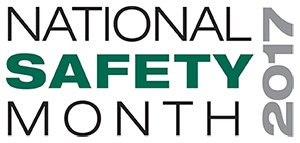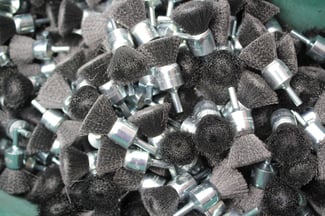 Workplace injuries can result in employee disability, lost productivity, and painful effects on your company's bottom line. According to the U.S. Department of Labor, employers pay almost $1 billion per week for direct workers’ compensation claims.
Workplace injuries can result in employee disability, lost productivity, and painful effects on your company's bottom line. According to the U.S. Department of Labor, employers pay almost $1 billion per week for direct workers’ compensation claims.
For manufacturers and machine shop owners, reducing the risk of worker injury isn’t just the right thing to do. It makes good business sense.
In recognition of National Safety Month, Brush Research Manufacturing (BRM) brings you the following power brush safety tips. The American Brush Manufacturers Association (ABMA) and the American National Standards Institute (ANSI) both publish complete guidelines. There are also federal, state, and local regulations you may need to follow.
Wear Protective Equipment
Power brush users and people who are in the area of power brush operations need to wear safety goggles or full face shields worn over safety glasses with side shields. Metalworkers and manufacturing personnel should also wear protective clothing. Gloves and aprons can help protect the skin from flying debris such as wires that are “thrown” from metal brushes.
Use Machine Guards

Machine guards are protective devices that can serve multiple purposes. In addition to preventing accidental contact between the operator and the machine, they can prevent flying debris from exiting the equipment. This includes not just power brush filaments, but also metal chips from the workpiece itself. Machine guards only work if you use them, however, so remember to keep them in place.
Obey the Speed Limit
Always obey the speed restrictions from the power brush manufacturer. Never exceed the maximum safe free speed (MSFS) for the brushing tool. MSFS is measured in revolutions per minute (RPM) and is the maximum rate of spinning without work applied. Typically, MSFS is listed on the packaging or labeling, or in documentation that accompanies the power brush.
Avoid Excessive Pressure
When you’re using a power brush, avoid applying too much pressure to the workpiece. Otherwise, the brush filaments can heat up, over-bend, become dull, or break. If the power brush that you’re using doesn’t provide the results that you need, try a brushing tool with a more aggressive cutting action or that supports higher speeds.
Replace Worn Brushes
Worn bearings or a bent spindle on a machine, an unusual application, or operator abuse or misuse are just some of the reasons why a power brush can wear and fail. When it’s time for a new brush, an investment in safety isn’t just the right to do. It makes good business sense.
To find the power brushes that you need, download the BRM product catalog.









